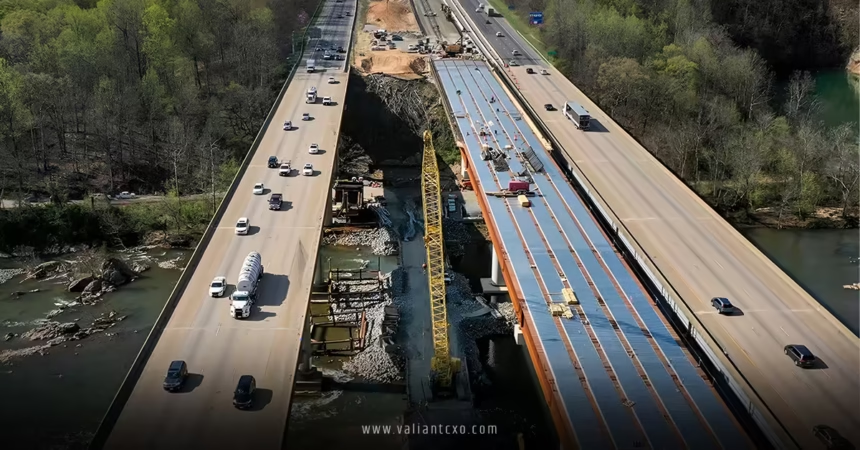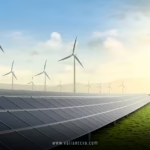US Infrastructure Investment and Its Economic Impact is more than just fixing potholes or building bridges—it’s about fueling the engine of the nation’s economy. Imagine a country’s infrastructure as its circulatory system: roads, bridges, ports, and power grids are the arteries that keep commerce, jobs, and innovation flowing. When these systems age or clog, the economy sputters. But when we invest wisely, the ripple effects are massive—jobs multiply, businesses thrive, and communities flourish. So, what’s the real deal with US infrastructure investment and its economic impact? Let’s dive into this topic, exploring how these investments shape the nation’s present and future.
Why Does US Infrastructure Investment Matter?
Think of infrastructure as the backbone of daily life. Without solid roads, reliable public transit, or modern utilities, everything grinds to a halt. US Infrastructure Investment and Its Economic Impact touches every corner of society, from the morning commute to the delivery of goods to your doorstep. But why should you care? Because these investments directly influence your wallet, your job, and your quality of life.
The Current State of US Infrastructure
America’s infrastructure is like an old car—still running, but creaking and in desperate need of a tune-up. According to the American Society of Civil Engineers (ASCE), the US infrastructure gets a C- grade, with many roads, bridges, and water systems dating back decades. Over 40% of the nation’s bridges are over 50 years old, and water main breaks happen every two minutes. That’s not just inconvenient—it’s a drag on the economy. Poor infrastructure leads to delays, higher costs for businesses, and even safety risks. US Infrastructure Investment and Its Economic Impact is critical because modernizing these systems isn’t just about convenience; it’s about keeping the economy competitive.
The Economic Ripple Effect
When the government pumps money into infrastructure, it’s like dropping a pebble in a pond—the ripples spread far and wide. US Infrastructure Investment and Its Economic Impact creates jobs, boosts local economies, and drives long-term growth. For every $1 billion invested in infrastructure, studies estimate 13,000 jobs are created. These aren’t just construction jobs; they include engineers, planners, and even baristas serving coffee to workers. Plus, better infrastructure means goods move faster, businesses save money, and consumers get lower prices. It’s a win-win-win.
How Does US Infrastructure Investment Fuel Economic Growth?
US Infrastructure Investment and Its Economic Impact isn’t just about shiny new highways—it’s about building a foundation for prosperity. Let’s break down the ways these investments supercharge the economy.
Job Creation and Workforce Development
Every construction site is a job factory. From laborers to project managers, infrastructure projects employ millions. In 2021, the Bipartisan Infrastructure Law allocated $1.2 trillion to rebuild roads, bridges, and broadband networks. This isn’t just a one-time boost; it’s a cycle. Workers earn wages, spend money at local businesses, and keep the economic engine humming. Plus, many projects include training programs, helping workers gain skills for high-demand fields. US Infrastructure Investment and Its Economic Impact doesn’t just create jobs—it builds careers.
Boosting Business Efficiency
Imagine you’re a small business owner shipping products across the country. Crumbling roads and congested ports mean delays and higher costs. Now picture a modernized highway system and upgraded ports. Suddenly, your goods arrive faster, and your costs drop. That’s the magic of US Infrastructure Investment and Its Economic Impact. Efficient infrastructure reduces transportation costs, which can account for up to 10% of a product’s price. Lower costs mean businesses can invest in growth, hire more staff, or pass savings to consumers.
Attracting Investment and Innovation
Modern infrastructure is like a magnet for businesses. Companies want to set up shop where roads are smooth, internet is fast, and utilities are reliable. US Infrastructure Investment and Its Economic Impact makes the US more attractive to both domestic and foreign investors. For example, high-speed broadband expansion opens doors for tech startups in rural areas, while upgraded airports draw global businesses. It’s like giving the economy a shot of adrenaline, sparking innovation and growth.
Key Areas of US Infrastructure Investment
Not all infrastructure is created equal. US Infrastructure Investment and Its Economic Impact spans multiple sectors, each with its own economic benefits. Let’s explore the big ones.
Transportation Infrastructure
Roads, bridges, and public transit are the lifeblood of commerce. The US has over 4 million miles of roads, but many are in disrepair. Investments in transportation infrastructure reduce congestion, cut commuting times, and lower vehicle maintenance costs for drivers. For businesses, it means faster delivery times and lower logistics costs. The Bipartisan Infrastructure Law earmarked $110 billion for roads and bridges, a move that’s already creating jobs and boosting local economies.
Energy and Utilities
Power outages cost the US economy $150 billion annually. Upgrading the electrical grid, investing in renewable energy, and modernizing water systems are critical components of US Infrastructure Investment and Its Economic Impact. A reliable grid supports businesses, while clean water systems improve public health, reducing healthcare costs. Plus, green energy projects create jobs and position the US as a leader in sustainability.
Broadband and Digital Infrastructure
In 2025, internet access is as essential as electricity. Yet, millions of Americans lack reliable broadband. The push for universal high-speed internet is a game-changer. US Infrastructure Investment and Its Economic Impact in this sector means rural communities can access online education, telehealth, and remote work opportunities. It’s like building a digital highway that connects every corner of the country.
Challenges in US Infrastructure Investment
No good deed goes unpunished, right? Despite its benefits, US Infrastructure Investment and Its Economic Impact faces hurdles that can slow progress.
Funding and Budget Constraints
Infrastructure isn’t cheap. The ASCE estimates a $2.6 trillion funding gap to bring US infrastructure up to par by 2030. While the Bipartisan Infrastructure Law was a massive step, it’s not enough to cover everything. States and local governments often struggle to match federal funds, and political debates over budgets can stall projects. Finding sustainable funding models is critical to maximizing US Infrastructure Investment and Its Economic Impact.
Regulatory and Environmental Hurdles
Building a bridge isn’t as simple as pouring concrete. Environmental reviews, permitting processes, and community input can take years. While these steps are crucial for protecting the environment and ensuring fairness, they can delay projects and inflate costs. Streamlining regulations without cutting corners is a tightrope walk for policymakers.
Workforce Shortages
You can’t build roads without workers. The construction industry faces labor shortages, with many skilled workers nearing retirement. US Infrastructure Investment and Its Economic Impact depends on training the next generation of workers, from electricians to civil engineers. Apprenticeship programs and workforce development initiatives are vital to keeping projects on track.
The Long-Term Economic Benefits
US Infrastructure Investment and Its Economic Impact isn’t just about immediate gains—it’s about setting the stage for decades of prosperity. Modern infrastructure improves productivity, reduces costs, and makes the US more competitive globally. For example, a 2019 study by the Brookings Institution found that infrastructure investments yield a $1.50 return for every dollar spent over the long term. That’s like planting a seed today and harvesting a forest tomorrow.
Enhancing Resilience
Climate change is throwing curveballs—hurricanes, floods, and wildfires are becoming more frequent. Infrastructure investments that prioritize resilience, like flood-resistant bridges or fire-proof power lines, save billions in disaster recovery costs. US Infrastructure Investment and Its Economic Impact means building smarter, not just bigger.
Supporting Underserved Communities
Infrastructure isn’t just about cities. Rural areas and underserved communities often lack basic services like clean water or reliable internet. Targeted investments in these areas reduce inequality and unlock economic potential. When everyone has access to the tools they need, the entire economy benefits.
Case Studies: US Infrastructure Investment in Action
Let’s get real for a second—US Infrastructure Investment and Its Economic Impact isn’t just theory. Here are two examples of how it’s transforming communities.
The I-35W Bridge in Minneapolis
In 2007, the I-35W bridge in Minneapolis collapsed, killing 13 people and disrupting commerce. The rapid rebuild, completed in 2008, cost $234 million but restored a critical economic artery. The new bridge improved safety, reduced congestion, and supported local businesses. This is US Infrastructure Investment and Its Economic Impact at its finest—turning tragedy into opportunity.
Broadband Expansion in Rural Virginia
Rural Virginia lagged in internet access, limiting economic growth. A $600 million investment in broadband infrastructure brought high-speed internet to thousands of homes and businesses. The result? New startups, better access to education, and a boost in property values. US Infrastructure Investment and Its Economic Impact is leveling the playing field.
How Can We Maximize US Infrastructure Investment?
To get the most bang for our buck, US Infrastructure Investment and Its Economic Impact needs smart planning. Public-private partnerships can stretch dollars further, while data-driven project selection ensures funds go where they’re needed most. Engaging communities early in the process builds trust and reduces delays. And let’s not forget innovation—using AI to optimize traffic flow or 3D printing for construction can revolutionize how we build.
Conclusion
US Infrastructure Investment and Its Economic Impact is the key to unlocking a stronger, more resilient economy. From creating jobs to boosting business efficiency, these investments touch every aspect of life. They’re not just about fixing what’s broken; they’re about building a future where everyone can thrive. By addressing challenges like funding and workforce shortages, the US can maximize the benefits of infrastructure investment. So, let’s keep the momentum going—because a stronger infrastructure means a stronger America. Ready to see where this road takes us?
FAQs
1. What is US Infrastructure Investment and Its Economic Impact?
US Infrastructure Investment and Its Economic Impact refers to the process of funding and upgrading critical systems like roads, bridges, and broadband, which drive job creation, business efficiency, and long-term economic growth.
2. How does infrastructure investment create jobs?
Investments in projects like highways or energy grids create direct jobs in construction and indirect jobs in related industries, boosting local economies and supporting workforce development.
3. Why is broadband included in US Infrastructure Investment and Its Economic Impact?
Broadband is essential for modern economies, enabling remote work, education, and business growth, especially in underserved areas, making it a key part of infrastructure investment.
4. What are the challenges of US Infrastructure Investment and Its Economic Impact?
Challenges include funding shortages, regulatory delays, and workforce shortages, all of which can slow projects and limit their economic benefits.
5. How can I learn more about US Infrastructure Investment and Its Economic Impact?
Check out resources like the US Department of Transportation or the ASCE Infrastructure Report Card for detailed insights.
For More Updates !! : valiantcxo.com


